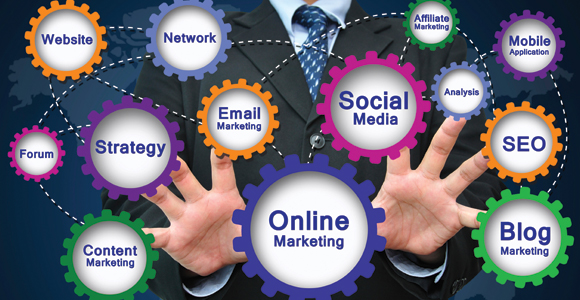
1. Ask yourself this critical question: how many visitors actually purchase anything from you? If the number or percentage is small, you need to rethink your basic design. There are dozens of great books written on web design concepts and how the eye sweeps the typical page and how color and white space impact the viewer. Brilliant website design is not a fluke or an accident. It is based on sound design principles. Don't let your website be created by anyone who is oblivious to these critical design concepts. Stop treating visitors as if they are already customers and start treating them like potential customers who have to be persuaded to buy your products and services instead of your competition’s products. You need to express your USP, or "unique selling position." The USP answers the question “why should they buy from me as opposed to my competition?” If you don’t have a good answer for that question, you will never succeed big time on the Internet. It must be abundantly clear on your website why your products and services are superior to your competitions. Website design often creates this special image of uniqueness. Sometimes the distinction is subtle. Sometimes it is obvious. Just remember it is never “quality” because everyone stands for quality. It must be something different. And tune into brilliant web design concepts if you want to project a world class company.
2. Create Emotional word pictures and streaming videos, not Logical gobbledygook or boring text pages. Most everyone thinks they are logical and rational, but in fact they are emotional. Attempt to understand the unique wants, needs and desires of your typical customer. Bottom line: people buy what they want, not what they need. Do you really need a new car or a bigger screen TV? No you don’t. You want them. You rationalize to justify your purchase, just like everyone else does. Are they buying it because they
need it or want it? There is a big difference. Are you making an emotional appeal or a logical appeal? 99% of all people aren’t bean counters. They are emotional beings who buy things impulsively. They satisfy their wants not their needs. If you are selling bolts or bearings, the appeal should tend to be logical. If you are selling cosmetics or clothing, it needs to be emotional. In between those two extremes, you probably need to push the emotional appeals even though the product is a necessity. Remember that all major purchases are emotional, later justified logically. Does your website create an exciting
experience? Is it thrilling or boring? Is it entertaining or scholastic? Boring websites don't sell. Does the basic design convey the image and emotional appeal you want? Develop the web concept of "Emotional Marketing." Animals live in the present while most humans live in the past and think about the future. Create mental images on your website in words, pictures, flash presentations and streaming videos that evoke an emotional response.
3. Customers are always looking for a good deal. They want to feel like they are getting a bargain. Create artificial urgency if possible. (only 5 left, or the sale ends Friday) Treat your Web-visitors like people who can satisfy their wants, needs, and desires with your assistance and guess what? Maybe it will make the critical difference. Since the internet provides instant price comparisons, you must differentiate your products and services from your competition using "branding" concepts and unique design so your potential buyer goes else where for a $.50 savings. Done right, you should become the only real choice.
4. Make your message clear. Don’t be scattered and confusing. Be clear and precise. Don’t hide your message in a torrent of words when a sentence or two will do it. Unless you are writing a story about a satisfied customer, keep the text short and punchy. Watch out for hyperbolae and exaggerated claims. They destroy trust. Nobody believes something lasts for a lifetime or that it will solve all your problems, like TV pitchmen claim. Be professional.
5. Think branding statements not generalization. There are countless books written about branding. Read some. Learn what Coca Cola knows, what Nike, Macy’s and other top retailers have learned years ago. Branding is much more sophisticated than you think. If you learn anything from this SEO report, learn the importance of branding concepts and how to use them for your products and services.
6. Make a sensory appeal, not a cents appeal. Use flash, video, movement, color, sound, music and streaming audio. Personally I love the new Chevy commercial where they sing “Hold on tight to your dreams.” by the Electric Light Orchestra in its 1983 album. Does your website create a sensory appeal? If not, your website won't be a big financial success. Period.
7. Think style and presentation. Look at what Apple’s founder and genius marketing guru Steve Jobs did with the new Ipod telephone. Establish an identity and personality to your website, which I think is best done by a real human video presentation who delivers your marketing message with pizzazz. Look at your web logs to see how long an average person stays on your website. They need to be there long enough to understand your message. The
longer they stay on your website, the more likely they will call or email you. Then it is up to your telephone staff to sell them when they call. Is your website "sticky?" Does your website project a distinctive style? Is the presentation compelling? If your website is just words and pictures, you are dead in the water.
8. Use examples and stories. I created a ball bearing website with an attractive girl making a presentation about the company then going to a video of the machine shop and sparks flying. I've also made a really cool web video about a jeep dealer that has gotten literally 1,000's of inquiries and comments. It has a Jessica Simpson type woman in country clothes making a killer presentation. How can you bring your website to life with a real person presentation—use a clever streaming video. I created a killer web video for a motorcycle shop and they get 3 million visitors a yearbecause of it. You need a streaming video presentation of a real person on your website who delivers your marketing message in an entertaining and memorable way. It is like a powerful TV commercial that always starts when the visitor arrives and is seen nationwide and worldwide 24-7. If you don't have one, you are stuck in yesterday.
9. Orient your consumer website around experiences not features. Nobody buys features. They want what the product or service does, not it features. People don’t buy shampoo for the contents. They buy it because they want clean hair. They don’t buy drill bits because of how they are made. They buy them because they want holes, not drill bits. In some rare instances people want detailed specifications, but in most cases they want the results.
10. The buzz word nowadays is “solutions.” I think it is over worked. Don’t get too fancy and prosaic. Be practical and down to earth. Tell people in simple language why they should buy your products and services. Over educated people who write the text on website sound like Merriam Webster. Forget high-fluting language. Write your text like ordinary people speak. If possible, use humor instead of worn out "solutions."
11. What people really buy are positive experiences. Does your website offer a new and exciting experience? Does it explain the experience your product or service delivers? If it doesn't, then you really don’t have anything anybody wants.
12. Learn all you can about SEO or Search Engine Optimization and Page Rank in Google. (see below) If your website is not top ranked, every dime you spent on it is wasted. I would rather have a crummy top ranked website than a million dollar website that nobody sees because it is on page 3. If your web designer is not a proven expert in SEO, find someone who is. Getting top rankings is everything—and everything else is nothing!





